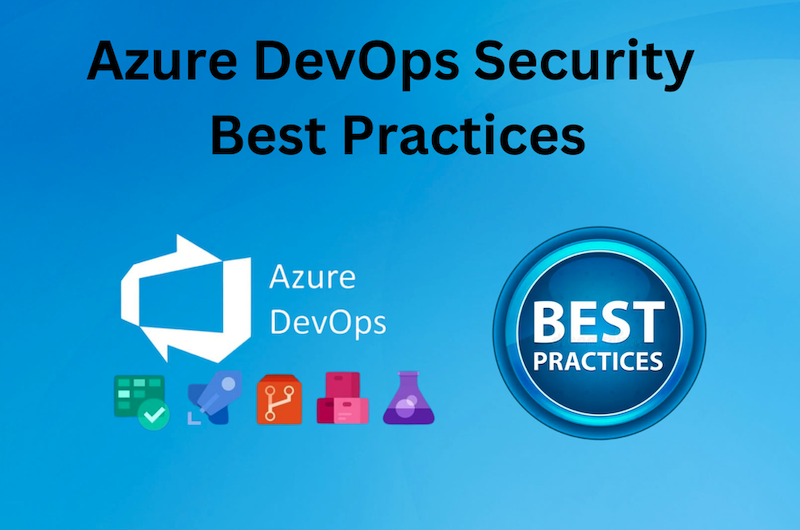
Azure DevOps Security Best Practices

Microsoft’s cloud services, Azure DevOps, offers a solid foundation for teamwork on software development projects from start to finish. Security is an essential component of today’s software development environment that cannot be compromised.
Securing the development and deployment pipeline is more important than ever as companies embrace DevOps to increase agility and efficiency.
However, having these technologies alone won’t cut it; you must also implement strict security best practices and consider Microsoft Azure Courses protecting your projects.
This blog explores critical tactics to improve security in Microsoft Azure DevOps settings.
Implement Strong Authentication and Authorisation
The strongest authentication and permission procedures are the basis for securing your Azure DevOps environment. Implement Azure Active Directory (AD) identity regulation with powerful permissions.
Use MFA (Multi-Factor Authentication) to add a further layer of security by verifying that users are who they claim to be. This step is crucial for resisting the continuously evolving credential theft.
Roles and Permissions
Roles and permissions need to be carefully configured in Azure DevOps. According to the least privilege concept, users and groups are granted minimal access to their duties.
This method greatly reduces the possibility of unintentional or malicious modifications that can compromise operational integrity or security.
Secure Your Codebase
Maintaining the integrity of your codebase is crucial. Version control is provided by Azure Repos, an Azure DevOps component that should be set up to enforce stringent branch standards.
Branch Policies and Code Reviews
Put branch policies in place to protect important branches, including your development and main branches. Make pull requests required for all changes and mandate reviews before merging.
This procedure guarantees strict oversight that can catch potentially dangerous code changes and improve the quality of the code.
Static Code Analysis
Use static code analysis tools in your continuous integration and continuous delivery pipelines to automatically scan your code for vulnerabilities as it is checked in.
By proactively detecting security problems early in the development cycle, possible dangers are greatly reduced.
Use Secure CI/CD Pipelines
The security of Constantly Integrating and Constantly Deploying (CI/CD) pipelines is seriously important because they are integral elements of DevOps methods.
Pipeline Security
Whenever possible, use private agents instead of hosted ones in your pipelines. Securely managing private agents inside can contain sensitive information.
Implement pipeline permissions to control who can alter your pipeline configurations.
Secure Artifacts
Maintain the security of every artefact produced by your CI/CD pipeline. Use Azure Artefacts to manage pre-built components and perform vulnerability scans on them.
To protect against known vulnerabilities, patch and update these components regularly.
Manage Secrets Safely
It is important to safeguard the keys through which secrets are managed, such as passwords, API keys and certificates.
Azure Key Vault enables one store that classifies private data securely and provides high control about who can access it.
Integration with Pipelines
Integrate Azure Key Vault and your Azure DevOps processes seamlessly. This integration improves security by allowing your apps to access secrets without having to directly embed them in your CI/CD scripts or source code.
Regular Audits and Compliance
To ensure continued security, you must conduct routine audits of your Azure DevOps procedures.
This entails checking that security policies and standards are being followed, examining activity logs for abnormalities, and assessing access controls.
Use Azure Policy
Use Azure Policy to scale up compliance management and impose organisational norms. This tool makes it easier to maintain and report on the compliance status of your resources, allowing for proactive issue resolution.
Training and Awareness
People are just as important to security as technology. Your development team’s regular training and awareness initiatives can greatly improve your security posture.
You can introduce a culture of security mindfulness by keeping your team informed about current security threats and best practices.
Conclusion
By following these security best practices, you may significantly improve the protection of your Azure DevOps environments from possible threats. In DevOps, security is an ongoing project involving people, technology, and procedures.
In today’s digital world, protecting your development pipeline from increasingly complex attacks requires being aware and on guard.


